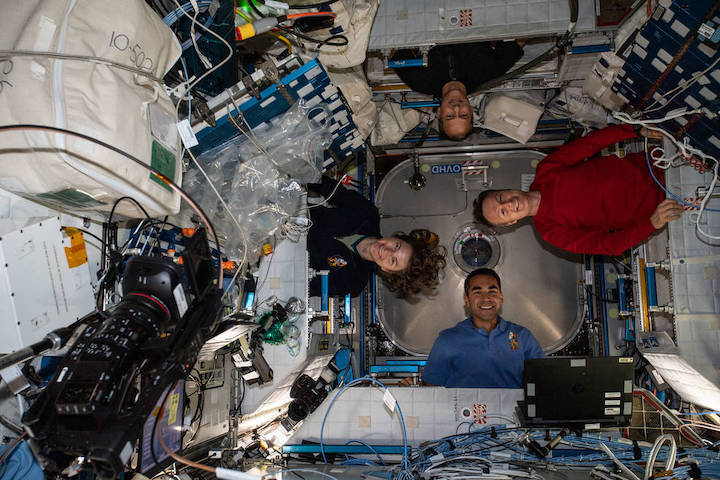13.04.2022

As they prepare to return to Earth later this month, NASA’s SpaceX Crew-3 astronauts will answer media questions about their time aboard the International Space Station during an in-orbit news conference at 1:20 p.m. EDT Friday, April 15.
NASA astronauts Raja Chari, Tom Marshburn, and Kayla Barron, as well as ESA (European Space Agency) astronaut Matthias Maurer, will participate in the news conference. The event will air live on NASA Television, the NASA app, and the agency’s website.
Interested media must contact the newsroom at NASA’s Johnson Space Center in Houston by calling 281-483-5111 or emailing jsccommu@mail.nasa.gov no later than 10 a.m. Friday, April 15. To ask questions, reporters must dial into the news conference no later than 1 p.m. Those wishing to submit a question on social media may do so using #AskNASA.
The Crew-3 astronauts have been living and working on the station since their launch Nov. 10, 2021. During their mission, the crew members contributed to hundreds of experiments and technology demonstrations. They worked on a variety of plant growth experiments, testing new systems for growing crops and studying potentially drought-resistant cotton plants. In addition, they tested a handheld bioprinter designed to print bandages made from skin cells directly onto a wound, and a miniature scanning electron microscope. Crew members also installed a new device to support studies on fire safety in microgravity, and conducted one of the first archaeological experiments in space. Working in pairs, the astronauts also completed four spacewalks to prepare the station for upcoming solar array upgrades by assembling and installing modification kits and successfully replacing a faulty antenna on the Port-1 truss structure.
The Crew-3’s SpaceX Crew Dragon spacecraft, which they named Endurance, will undock from the space station later this month, splashing down off the coast of Florida to conclude the mission.
NASA’s SpaceX Crew-3 mission is the third crew rotation mission of the agency’s Commercial Crew Program. Regular, long-duration commercial crew rotation missions enable NASA to continue the important research and technology investigations taking place aboard the station. Such research benefits people on Earth and lays the groundwork for future exploration of the Moon and Mars starting with the agency’s Artemis missions, which includes landing the first woman and person of color on the lunar surface.
Quelle: NASA
